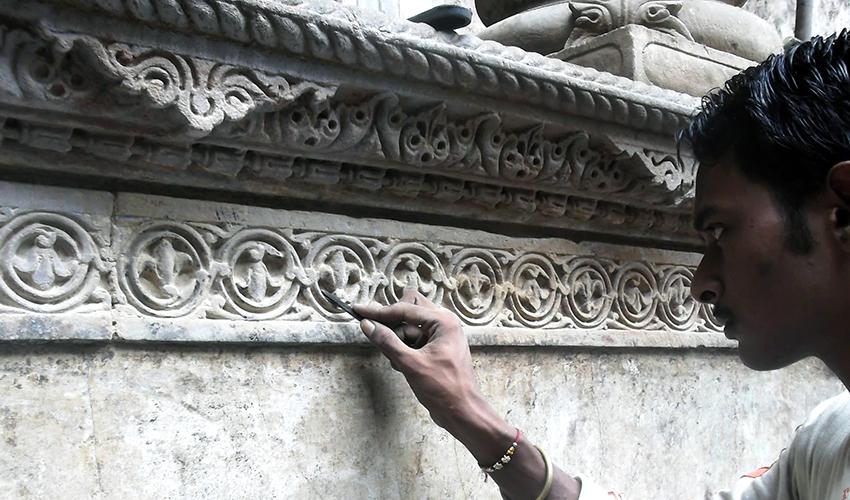Preserving Ahmedabad's Pol Houses

The city of Ahmedabad lies in the western zone of India in the central Gujarat region. Its origins date back to early 15th century when Sultan Ahmedashah founded the present city on its existing site in 1411 AD. Ahmedabad is one of the few cities in India that holds a living heritage within its urban fabric. This living heritage is in the form of traditional pol houses that reflect the essence of several communities within the walled city.
There are about 600 pols within the walled city of Ahmedabad with intricately crafted wooden facades, balconies, fenestrated windows and chabutras (bird feeders). The walled city of Ahmedabad was recently nominated as the first World Heritage city of India by UNESCO. The city has been a hub of various craft forms that originated within the city. Building craft communities in the city have passed their traditional knowledge from one generation to the next. These crafts include wood and stone carving, marquetry, stone inlay and traditional ornamental metal work. The process of preservation of a historic building involves the utilization of these heritage crafts at every stage of its execution. Thus the role of heritage crafts within this process is crucial and influences the expression of a building past its preservation.
Several preservation projects have been executed within the walled city of Ahmedabad, and every project has placed emerging challenges and threats for the preservation sector. The aim of this research is to analyze the various challenges and threats faced by the preservation sector in Ahmedabad and the effect of heritage crafts on the preservation practices in the city.
Manushi Mathur is a graduate in interior architecture and design from Faculty of Design, CEPT University and holds an International Masters in Interior Architectural Design from CEPT University with a specialization in Crafts and Technology. She has done an intensive research on traditional dwellings in Patan (North Gujarat, India) and has worked in the documentation of Traditional and Vernacular Houses of Gujarat for three years. Before coming to UT, she worked as an Assistant Professor at CEPT University and United World Institute of Design, India where in she taught courses like design history with a focus on interior design and architecture and research methodologies. During her undergraduate years, she was involved with Ahmedabad Heritage Cell, India in the documentation of Pol houses of Ahmedabad. She is deeply interested in the study of preservation policy and management especially the preservation management in developing countries. She has also worked as an Interior Architect for four years prior to pursuing her graduate degree from CEPT Univesity, India, focusing on bringing Indian sensibilities to interior spaces.
__________
Goldsmith Talks is an open-format series of presentations organized by UTSOA faculty, staff, and students. the series aims to encourage and promote presentations that are outside of the scope of the main lecture series. Examples are: invited seminar presentations, book talks, lectures by designers and scholars who may be in Austin for another engagement, round-table discussions, film screenings, product demonstrations, or any other activity related to research, scholarship, and teaching activities and at the school. The format provides a platform for encouraging the dissemination of work by visitors and members of our community. The goal is to raise awareness, increase access, and better integrate such events within the public life of the school.

